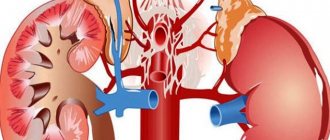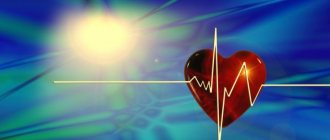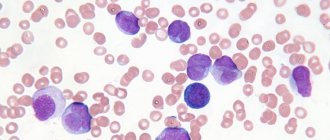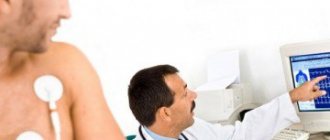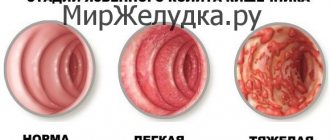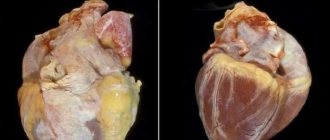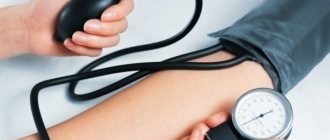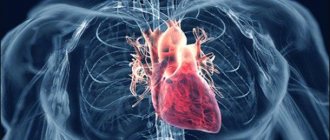Development of the disease
Hypertension is a cardiovascular disease caused by an increase in intravascular blood pressure, which entails a number of negative processes and disruptions throughout the body. The pathogenesis of the disease is a violation of blood circulation, which is controlled by the brain. This occurs due to circulatory activity, accompanied by vasoconstriction.
The disease is diagnosed by a general practitioner who measures blood pressure using a tomograph. At the same time, he records indicators that exceed the norm. However, the diagnosis of “hypertension” does not end with one blood pressure measurement. To do this, you need to record increased indicators in a calm and active state for several days.
Many people believe that hypertension occurs only in old age, but this is a misconception. Today, experts are increasingly recording juvenile arterial hypertension caused by a poor environment, poor nutrition and other factors. This is what can really cause a person's hypertension.
The development of hypertension in men can begin in youth, at a time when women are still quite healthy. The female body is less susceptible to disease due to the hormone that supports it. However, during menopause it ceases to be produced and provide protection, leading to the development of increased intravascular pressure. That is why, only in old age does the incidence rate among men and women equalize.
Initially, G. F. Lang began to talk about the development of hypertension back in 1948, after which his theory was supported by A. L. Myasnikov, together with a team of medical staff who continued Lang’s endeavors.
Then it turned out that the true cause of the development of hypertension is a malfunction of the higher uneven system located in the medulla oblongata, hypothalamus and cerebral cortex. These brain systems help regulate vascular tone, which leads to increased tonic contractions of arterioles.
Failures in the functionality of the nervous system can change the order of biochemical processes occurring inside the body. This causes increased activity of the hypothalamic centers of the sympathetic part of the central nervous system, affecting the vascular system. At the same time, an increase in the tone of the sympathoadrenal system was also recorded.
External hypertension is nervous tension, which includes negative emotions and other factors that irritate the nervous system (including psychological trauma). They cause stagnation of foci of excitation in the central nervous system, and also contribute to disruption of intravascular tone and regulation.
Internal hypertension is a deviation of the nervous system caused by its characteristics and reaction to irritants that have accumulated throughout human life (including infections affecting the activity of the central nervous system). This also includes congenital, hereditary characteristics, endocrine-nervous deviations/changes similar to neurotic disruptions during female menopause.
Professor Myasnikov believes that hypertension is a hypersthenic disease caused by nervous tension. At the same time, in hypertensive patients, not weak, but enhanced processes occurring inside the central nervous system are observed. Therefore, the disease is extremely rare in people with increased neurophysical activity. When examining a patient, doctors do not use exclusively external or internal factors, but consider their combination. This way they can find out the most accurate information about the causes of hypertension and prescribe the most effective therapy.
How to deal with arterial hypertension?
If you are 30-40 years old and you decide to fight arterial hypertension, then first of all you need to reduce your body weight. Many can see from their own experience that blood pressure in this case will decrease significantly.
The next stage is reducing the amount of salt consumed. This is especially true for older people, since the kidneys begin to work worse, and salt retains fluid inside the vessels, and pressure increases. In addition, normal physical activity is important, that is, every day you need to walk down the street for at least 30-40 minutes. If it is not possible to walk on the street, then you can compensate for physical activity on a treadmill or exercise bike. Your muscles must work! Working muscles consume energy, which affects blood flow, which lowers blood pressure. Otherwise, there is a need to take medications.
Causes
In medicine, it is customary to conditionally divide the causes of hypertension into external and internal.
External factors that provoke hypertension include an irrational lifestyle, which includes poor nutrition, abuse of fatty, salty, sweet foods, as well as:
- Regular use of alcoholic beverages and drugs.
- Smoking.
- Frequent exposure to stressful situations. In this case, you should change your nervous workplace and improve relationships with your family.
- Regular emotional outbursts (negative).
- Inactive life activity. If the work of a patient with hypertension requires a constant stay in the office, then it is necessary to go to sports complexes and go for morning jogging.
- Incorrect use of medications. You should know all the side effects of the medications used, use them strictly as prescribed by the doctor and exclude those that contribute to an increase in intravascular pressure.
Every human action affects health in a good or bad sense, and given the current pollution of the environment, the peak of the use of harmful substances, a person doubles his risk.
Wrong diet
Bad habits/poor nutrition contribute to metabolic disorders and poison the body day after day. As a result, the blood vessels become narrowed or blocked, preventing the normal flow of blood throughout the body and causing poor blood flow.
Excess human weight is the main cause of arterial hypertension. Many organs and systems of the body suffer from this. Most often, excess weight occurs in old age, causing various abnormalities in the performance of the heart and blood vessels.
Problems associated with excess weight arise due to a sedentary lifestyle, an unbalanced diet containing an excess of fatty, salty and sweet foods, which increase the amount of cholesterol in the blood. The first signs of hypertension caused by obesity are the thickness of the fat layer and waist diameter. If in men it exceeds 94 cm, then it is time to take radical measures to promote weight loss, and for women this figure is 80 cm.
Based on statistics, about 30% of men over 35 years old, and 50% of women, face obesity. However, it is impossible to determine the same diet for all people. This is due to the individual characteristics of the body and life activity, because people leading a sedentary lifestyle require fewer calories (as do short people), and tall and active people need more. Therefore, in order to normalize your weight, you need to consult a nutritionist and engage in physical exercise.
An increased content of cholesterol in the blood plasma is observed with an unbalanced diet, because this enzyme enters the body together with food (it is also produced by the body itself). As a result, excess cholesterol contributes to the destruction and reduction of liver performance, the appearance of hypertension and obesity.
A qualified nutritionist, examining the patient, will conduct a study and then exclude the following foods: fatty fish and meat, animal fats, liver products, and prescribe dishes containing vegetable oils that reduce cholesterol levels in the blood plasma.
A large amount of consumed salt and salty foods are the most common causes of hypertension, which negatively affect the body in general, because they contribute to fluid retention in it.
It has been proven that sodium chloride in excess causes salt hypertension, swelling, difficulty breathing, and pain in the heart. During the research, it was noted that the condition of people who refused to consume plenty of salt, for the most part, returned to normal, because, according to statistics, 1 g of sodium chloride increases blood pressure by 1 mm. rt. Art.
Lack of activity and stress
During sedentary work and an inactive lifestyle, blood stagnates in the vessels, as a result of which they narrow, reducing cardiac performance. If you do not attend sports clubs, it is impossible to restore the normal state of the vascular-cardiac system, and in the future this will lead to unpredictable consequences.
Stressful situations and emotional outbursts are a negative factor for the body, because at these moments the activity of the heart changes and the pulse quickens. Against the background of narrowed blood vessels, the heart does not have enough blood to nourish it, and, as a result, oxygen starvation of the entire body occurs. If stressful situations at work or in the family occur regularly, then urgent measures should be taken to restore normal cardiac functionality and prevent serious consequences.
Age
It was also noted that the causes of hypertension also depend on the age category.
Conducting numerous studies of people of different ages, experts have established the following pattern: approximately every 10-20 years, a person’s normal intravascular pressure values naturally increase, and a diagnosis is assigned when the danger zone is regularly reached.
| The age of the person. | Pressure is systolic. | Diastolic. | ||||
| Bottom line. | Upper. | Dangerous area. | Bottom line. | Upper. | Dangerous area. | |
| 15 | 80 | 120 | 120-130 | 50 | 80 | 80-90 |
| 16-29 | 90 | 130 | 130-139 | 60 | 85 | 85-90 |
| 30-39 | 90 | 130 | 130-139 | 60 | 90 | 90-94 |
| 60-69 | 100 | 150 | 150-190 | 60 | 90 | 90-94 |
The development of hypertension at a young age is possible when the upper limit of normal values is exceeded, and the reason for this deviation may lie in the following disruptions in the body: when the functionality of the endocrine system or hormonal levels changes due to puberty (during which the relationship between the endocrine and nervous regulation of arterial blood is disrupted) pressure).
With a sharp decline in the performance of the gonads in mature women and men, hypertension begins to actively develop due to instability of intravascular pressure.
However, this hypertensive manifestation may normalize over time.
Internal reasons
Internal causes of arterial hypertension arise as a result of the patient’s existing diseases, which provoke an increase in blood pressure. These include:
- Excessive amounts of calcium in the blood plasma.
- Failure in renal function.
- Diabetes.
- Chronic diseases of infectious origin.
- Genetic predisposition to high blood pressure.
Insulin is a hormone responsible for the amount of glucose in the blood, directing it to the cells of the body. It also dilates blood vessels. At normal levels, it does not cause harm, but when it is in excess (in diabetes), it provokes an increase in blood pressure and a predisposition to the development of arteriosclerosis, and indirectly affects the condition of blood vessels, the thickness of the vascular lumen and walls.
Glomerulonephritis, pyelonephritis, urolithiasis - these diseases are caused by narrowing of the renal arteries, leading to kidney hypertension. In this case, blood circulation inside the organ is disrupted, and an increased amount of angiotensin and renin is produced, leading to resistance inside the vessels and an increase in tonometer readings. In chronic cases, hormonal changes are possible, provoked by increased intravascular pressure.
In addition, not only kidney diseases can cause hypertension, but also, on the contrary, periodically pathology causes kidney disease.
The causes of arterial hypertension resulting from adrenal tumors are pheochromocytoma and aldosteroma. These diseases affect paired endocrine glands, which produce hormones that affect intravascular pressure and are located at the top of the kidney. With a tumor - aldosterome, the amount of aldosterone in the blood plasma increases. However, this does not end with high blood pressure, because the disease provokes a loss of potassium, which is excreted through the urethra.
With pheochromocytoma, a large amount of the hormone adrenaline is produced, resulting in an increase in blood pressure. The disease causes many symptoms, characterized by fever, sudden increases in blood pressure, redness of the skin, increased sweating and increased heart rate.
Aortic caorctation is a rare congenital disease. At the same time, the area of the aorta narrows, impeding renal blood flow and leading to active production of renin in the body. Thyroid diseases. Hormones produced by the thyroid gland are capable of regulating the entire metabolism in the body, however, when a diffuse or nodular goiter is detected in a patient, the amount of thyroid hormones increases, leading to rapid heartbeat and hypertension.
This also includes the causes of pulmonary hypertension (internal), in which a narrowing of the pulmonary arteries occurs, which do not perform their functions correctly and can provoke a deterioration in the patient’s condition. With pulmonary hypertension, the structure of the organ is disrupted, leading to alveolar hypoxia. This disease can develop against the background of the following pulmonary diseases:
- Bronchiectasis. With the disease, suppuration and cavities form in the lower zone of the lungs.
- Chronic obstructive bronchitis changes the structure of the lungs, closing the pathways intended for the passage of air.
- Fibrosis of lung tissue is characterized by changes in the tissue itself, where normal cells are replaced by connective cells.
However, in addition to pulmonary diseases that cause this type of hypertension, there may also be heart diseases that negatively affect the performance of the vascular system of the lungs. These include: congenital defects (septal defects, patent foramen ovale), as well as other diseases that reduce the functionality of the heart muscle and contribute to stagnation of blood in the pulmonary circulation.
In addition to the above-described reasons for the appearance of hypertension, there are additional factors, which include the state of the central nervous system, its performance, balance (affecting nuances that a person usually does not notice), namely: changes in the color of wall surfaces, surrounding gas pollution and the appearance of odors. Researchers have proven that bright orange and red colors promote arousal, and the smell of rose oil increases skin temperature, dilates blood vessels, slows the pulse and lowers blood pressure, when the smell of ammonia causes the opposite reactions in the body.
People living in cities regularly suffer from exhaust gases containing high levels of lead, carbon monoxide and other heavy metals, which cause disruption of the cardiovascular and nervous systems.
Diagnostics
Hypertension is characterized by symptomatic processes that directly depend on its form. Thus, the first signs of the transient form are manifested by a periodic increase in blood pressure. These jumps last for several hours or days.
In some cases, a woman’s condition returns to normal on its own and does not require drug intervention. In the case of the labile nature of the pathology, an increase in blood pressure occurs against the background of excessive physical activity, under the influence of extreme heat, stress, etc.
This hypertensive form requires mandatory and immediate treatment, since blood pressure readings will not return to normal on their own.
If we talk about stable hypertension, it is characterized by persistently high blood pressure levels. To normalize the condition, the woman undergoes an appropriate treatment course, after which preventive measures are recommended.
The hypertensive form of the disease can lead to a crisis, during which the pressure rises sharply, causeless anxiety and panic attacks occur. If emergency medical care is not provided, blood pressure reaches life-threatening levels. Irreversible consequences may occur, leading to disability or death.
In some cases, hypertension is accompanied by a slight increase in blood pressure, while the woman’s well-being remains satisfactory. Obvious signs of the disease make themselves felt when target organs are damaged.
We are talking about the kidneys, the brain, the heart. A violation of the walls of the left ventricle develops, leading to a malfunction of the vascular system and heart.
The following signs are noted:
- Migraine attacks.
- Constant dizziness.
- Shortness of breath at complete rest or with minimal exertion.
- Disorder of the visual apparatus.
- Severe and long-lasting swelling.
- Unreasonable attacks of suffocation.
Important! In women, a hypertensive attack is accompanied by increased anxiety, and hyperemia appears on the face. There may be tremors in the hands, the formation of goose bumps, cold sweat is replaced by heat, and severe nervous excitement occurs. In the absence of treatment, these manifestations intensify and gain intensity depending on the hypertensive stage.
Hypertension, in addition to clearly visible headaches, is manifested by the following conditions:
- Unreasonable photophobia.
- Extraneous noise in the ears.
- Nausea accompanied by a gag reflex.
- Irritability of the eyes, feeling of sand in them.
- Increased headache when coughing, sneezing, defecation (the moment of straining), sudden turning of the head.
The complicated course of the disease, if timely treatment is not provided, is represented by disturbances in the functioning of vital organs, which entails the development of renal failure, coronary artery disease, and hypertensive encephalopathy. Visual function deteriorates due to damage to the ocular vessels.
If your blood pressure is constantly elevated and the above symptoms appear, you should immediately contact your doctor for a diagnosis. The doctor will conduct a comprehensive examination, take an anamnesis, find out the risks, and listen to the patient.
Hypertension when listening shows the presence of murmurs and uncharacteristic sounds in the heart. Further research is carried out using the following methods:
- ECG, which allows you to detect changes in heart rhythm, hypertrophy of the left ventricular wall, characteristic of hypertension;
- Ultrasound of the heart, to identify pathologies in its structure, changes in wall thickness, to determine the condition of the valves;
- Arteriography is an x-ray method showing the condition of the arterial walls and the lumen of the arteries. The method allows you to detect the presence of plaques;
- Doppler ultrasound allows you to examine blood flow;
- Biochemical blood test - determination of the level of cholesterol and lipoproteins of very low, low and high density: these substances indicate the presence of a tendency to atherosclerosis;
- Ultrasound of the kidneys and analysis to determine the level of urea and creatinine;
- Ultrasound of the thyroid gland;
- blood test for hormones.
The diagnosis of hypertension is based on monitoring blood pressure at home (during exercise and at rest). You can monitor your blood pressure using automatic or manual pressure gauges.
Hidden factors
Based on medical practice, many people live their usual lives and do not feel any signs of hypertension, and attribute temporary malaise and weakness to fatigue from a hard day at work. Most often, hypertension with hidden symptoms is discovered during a random therapeutic examination (when a doctor measures pressure with a tonometer), and at home (by the hypertensive patient himself). Then it becomes clear that the constant negative impact on the body cannot pass without leaving a trace. The patient has a question about how to identify hidden cardiovascular problems and how to eliminate them.
Both women and men can equally not feel attacks of high blood pressure. However, members of the stronger sex are more likely to die due to asymptomatic hypertension.
Having studied more than a dozen patients with asymptomatic hypertension, scientists have not yet been able to find the answer to why there is no pain from the disease, but the effect is the same? They are inclined to believe that the main causes of latent hypertension lie in the consumption of alcoholic beverages and regular exposure to stressful situations (accompanied by unfavorable emotions).
As a result, if a patient periodically experiences headaches, numbness in the left arm, vascular pulsation in the temporal zone, slight pressing or pain in the chest, rapid heartbeat, shortness of breath, then hypertension shows minimal signs.
Having discovered deviations in the performance of the vascular-cardiac system, you should regularly measure the pressure level at home using a tonometer (at least 5 times a day, even at night). If the device shows a pressure level of 140/90 or more, you should immediately call an ambulance, because the asymptomatic form is especially dangerous. Without causing severe pain, a person may not notice a significant increase in pressure (or be calm about the deviation), which will lead to unforeseen consequences, and even death.
If chronic hypertension is detected, you should regularly take medications strictly as prescribed by your doctor, do not skip doses or change dosages without his knowledge. Be examined by a cardiologist at least once every 6 months to clarify the prescription and avoid complications (myocardial infarction, atherosclerosis and hypertensive crisis).
Hypertensive crisis
Hypertensive crisis is an emergency condition, consisting of a sharp increase in blood pressure to high numbers and characterized by a sharp deterioration in the blood supply to all internal organs, in particular vital ones.
It occurs when the body is exposed to various unfavorable factors; it cannot be predicted, which is why uncontrolled hypertension is dangerous. The urgency of the problem also lies in the fact that in the absence of timely emergency care, death is possible.
To provide emergency assistance, the patient must be immediately taken to the hospital, where his blood pressure is quickly reduced with medications.
Students of medical institutes study first aid for a hypertensive crisis at the Department of Propaedeutics of Internal Medicine, and therefore it would be best for a random passer-by not to try to provide assistance, but to call an ambulance.
How to get accurate results?
- Measure blood pressure indicators exclusively in a calm environment, sitting with a straight back, leaning on the back of a chair (in a relaxed state).
- Wear loose clothing.
- Take measurements no earlier than an hour after eating. You should also stop smoking and drinking coffee for 60 minutes.
- Don't talk.
- Before the procedure, you should lie down for at least 5 minutes.
- Measure blood pressure on both arms 2-3 times.
Taking these recommendations into account, you can obtain true data at home, without outside help. It is recommended to measure the pressure level at the slightest headaches, chest pressure and other symptoms, and if elevated levels are detected, immediately consult a doctor, because hypertension detected in the early stages allows you to eliminate the disease in full.
This approach to diagnosing latent hypertension will allow you to identify the disease yourself. Often the disease does not manifest itself during a medical examination, but at home it begins to actively progress, so checking your blood pressure level at home will allow you to notice the ailment in time, and if abnormal readings are detected that are much higher than normal, call emergency help.
Therefore, hypertension, like any disease, has symptoms and causes, but you should not wait for major disruptions in the functioning of the cardiovascular system, or serious urges for treatment (pain). This is fraught with the transition of the disease to complicated forms, leading to death. To protect yourself, it is recommended to purchase a tonometer and regularly measure pressure readings, and if there are frequent deviations, consult a doctor for emergency treatment.
Main symptoms
The most common symptoms of hypertension:
- severe and prolonged headaches in the temples and in the back of the head;
- tinnitus is caused by a narrowing of blood vessels, therefore accelerating the flow of blood in them;
- visual impairment - double vision, floaters, retinal separation;
- vomit;
- dyspnea.
Common symptoms of hypertension are:
- tinnitus;
- headache;
- facial redness;
- dizziness;
- cardiopalmus;
- memory impairment;
- profuse sweating;
- attacks of pulsation in the head;
- chills;
- puffiness around the eyes;
- attacks of irritability, anxiety;
- “flies” flashing before the eyes;
- constant fatigue, decreased performance, a feeling of systematic lack of sleep;
- numbness and swelling of the toes and hands.
Hypertension refers to a number of diseases associated with the cardiovascular system. What is hypertension and how is it expressed? In medicine, this disease is called arterial hypertension and is expressed by regular high blood pressure in humans (from 190 per 40 ml of mercury and above). The disease is a common problem of humanity.
Causes of hypertension
How can you determine whether your blood pressure is high or not? Of course, the simplest and most reliable way is to measure your blood pressure, but if you don’t have a tonometer at hand, you should be alerted to changes in your well-being and certain sensations. Symptoms of hypertension may include:
- headache;
- dizziness, flashing spots before the eyes, lightheadedness;
- nausea;
- swelling;
- feeling of heat;
- a rush of blood to the face, the appearance of a pronounced capillary network on the skin;
- burst blood vessels in the eyes;
- feeling of lack of air, increased excitability, feeling of anxiety, irritation, aggression.
General symptoms of hypertension
All signs of hypertension can be divided into 2 groups: those that appear specifically in response to increased blood pressure and those that constantly accompany a sick person.
The following symptoms appear shortly after the tonometer readings increase:
- headache;
- decreased clarity of vision;
- noise in ears;
- flashing before the eyes;
- dizziness;
- restless sleep;
- heaviness in the neck;
- tachycardia;
- lack of sensation in the limbs.
It is not at all necessary that if arterial hypertension syndrome has developed, the patient should exhibit all of the above symptoms at the same time. The intensity of the manifestations depends on the stage of hypertension and on how many units the pressure is increased.
Symptoms of hypertension in women most often appear during menopause, although there are cases of the disease at an earlier age. It is known that signs of the disease may appear earlier, but at this time there is a greater risk of hypertensive crises.
Attention! Sometimes the disease is practically asymptomatic, and hypertension can only be determined by measuring blood pressure and undergoing additional diagnostic procedures.
Hypertension can cause the following symptoms, regardless of attacks of high blood pressure:
- memory loss;
- nausea and vomiting;
- sleep disturbance;
- nosebleeds;
- skin hyperemia;
- changes in eye pressure;
- swelling;
- increased fatigue.
Long-term hypertension leads to various heart diseases. This is due to the fact that with increased pressure, the heart muscle is under constant tension and gets tired faster. Often, because of this, people develop hypertensive disease with predominant damage to the heart, including heart failure.
How is hypertension different from hypertension?
Often these two concepts are confused. Hypertension and Hypertension: The differences are as follows:
- hypertension is a symptom characterized by a persistent increase in blood pressure;
- hypertension is a disease with all the symptoms combined.
Clearly distinguishing between these concepts facilitates communication with medical staff and eliminates the need to waste time explaining terms.
What leads to hypertension. Risk factors
Hypertension is a disease in which the mechanisms that regulate blood pressure in humans are disrupted. Blood pressure rises in anyone, even a healthy person, during physical activity. This is a normal reaction of the body. Some time passes, the mechanisms turn on, and blood pressure returns to normal. However, blood pressure can increase without heavy physical work or jogging. Then this is a disease that can lead to complications if treatment is not started in time and bad habits are not given up.
What are the risk factors for hypertension?
Hypertension, as a rule, is based on a hereditary predisposition - a violation of the exchange of electrolytes in the walls of blood vessels. Hereditary predisposition plays a significant role in the development of this dangerous disease. This is a possible risk factor for hypertension, widespread, but has two features:
- it is not always possible to identify a particular patient’s hereditary predisposition to a disease in advance;
- Hypertension may not always develop from a predisposition.
It is not hypertension itself that is inherited, but only a predisposition to the disease. As a result, factors that increase blood pressure begin to act more aggressively than on a person without a predisposition.
Blood pressure may increase due to bad habits: smoking, alcohol abuse or high-calorie foods. Lifestyle also influences: inactivity, stress and psycho-emotional overload, as well as violation of the work and rest schedule, and especially regular violation.
Is it possible to calculate the risk?
Experts from the European Society of Cardiology have compiled a table of the risk of complications of the cardiovascular system. Using the SCORE table, you can estimate the probability and take time to improve your health. Necessary data for calculation: blood pressure, age, gender, presence or absence of a harmful factor - smoking. SCORE will determine how high the rate of cardiovascular disease will be in the next ten years. The table is easy to use: you can calculate it yourself, or you can ask a therapist for help.
For example, we have the following indicators: man, 65 years old, blood pressure level 185/110 mm Hg. Art., cholesterol – 8, smokes. Comparing all the indicators in the table, we get the risk of cardiovascular diseases - 47%.
The method also takes into account the influence of risk factors. Usually people do not attach importance to the harmful effects of cigarettes, especially if they smoke up to two cigarettes a day. However, doctors say that each act of smoking can increase blood pressure by up to 30 mmHg. Art. Overeating and frequent consumption of high-calorie foods lead to the accumulation of cholesterol, which also complicates the course of hypertension. Excess weight affects blood pressure; one kilogram of excess weight raises blood pressure by 1-3 mmHg. Art. These are, of course, conditional indicators, but poor nutrition and cigarettes certainly do not help normalize blood pressure. Therefore, doctors recommend quitting smoking and eating a balanced diet when illness occurs.
It is also necessary to do physical exercise. Sports sections, of course, will be a big burden for the body, and simple regular exercise will raise your tone and help normalize your blood pressure levels.
Sedentary and strenuous work activities are occupational risk factors for the development of hypertension. People who are forced to work mainly in the office, sitting at a desk, as well as employees who often experience stressful conditions during the working day, often suffer from hypertension or find it difficult to maintain normal blood pressure for a long time.
You need to take medications constantly, since breaks do not contribute to normal treatment and do not allow blood pressure levels to become normal or decrease.
